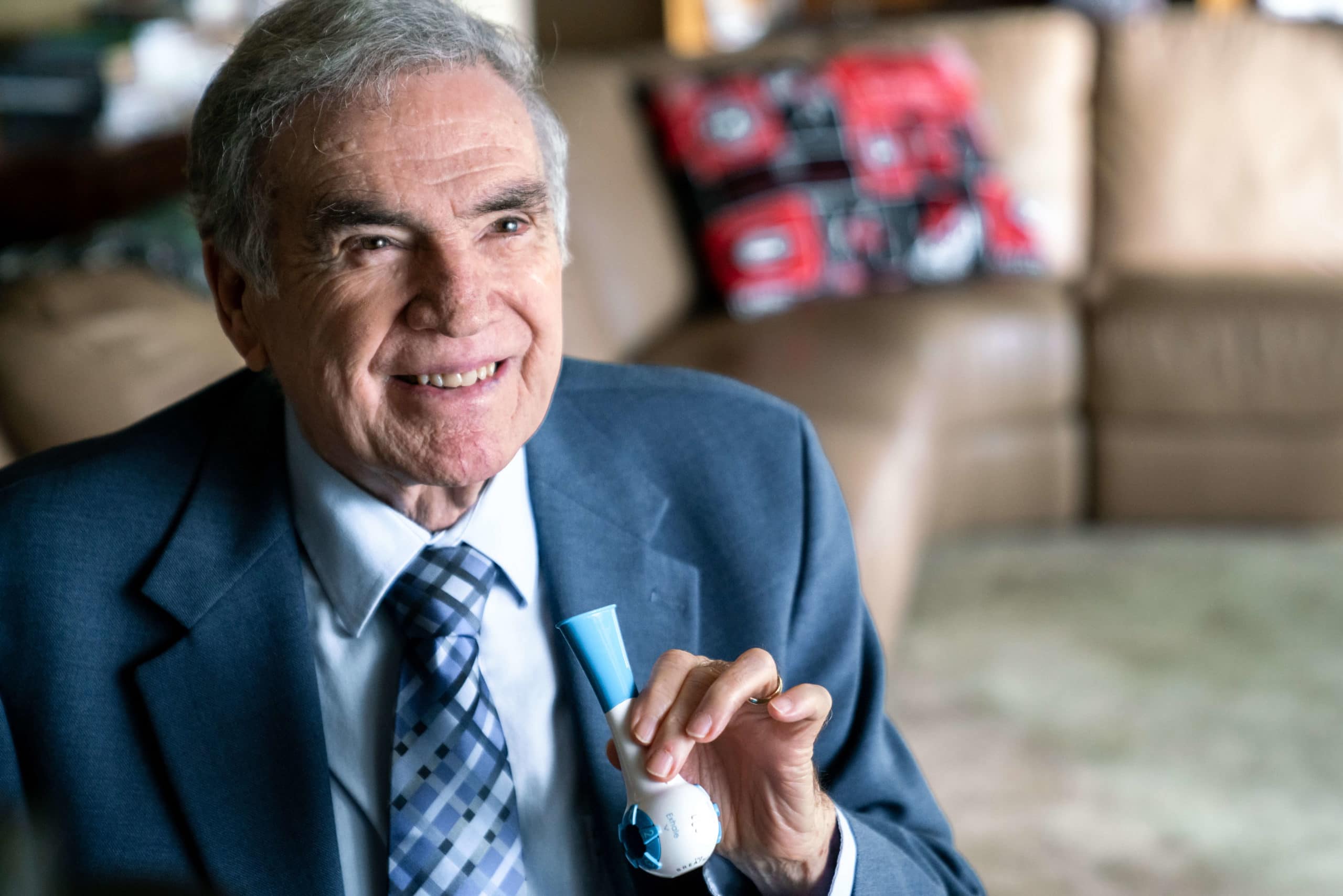Active contraction of the respiratory muscles provides the energy required for ventilation of the lungs during breathing. Quiet breathing is maintained by the diaphragm and external intercostal muscles during inspiration, while expiration is a passive process. During vigorous breathing or in respiratory disease, additional muscles are activated, and expiration becomes muscle mediated (1). Respiratory muscle weakness, defined as insufficient respiratory muscle strength to overcome increased respiratory load, is prevalent in respiratory and neuromuscular diseases, but also in a wide range of other disorders, such as spinal cord injury (2), congestive heart failure (3), and low back pain (4). It is also impaired in dysfunctions of the vocal cords, dysphonia and dysphagia (5). Respiratory muscle strength, endurance, fatigue and dyspnea or breathlessness interrelate and contribute towards exercise tolerance, which is often greatly reduced in diseases affecting muscle strength (1).
Evidence has shown that RMT increases inspiratory and expiratory mouth pressure, as well as ventilatory capacity, proving its efficacy to increase strength and improve endurance, respectively (6). Associated and additional benefits include reduction of dyspnea, increased exercise tolerance and performance, health-related quality of life, depression and anxiety, which were observed in a range of different patient groups and associated diseases (3),(4),(7). Recent evidence with strong clinical implications has shown that RMT optimizes use of and efficacy of dry powder inhalers in COPD patients, and reduces hyperinflation, a strong prognostic marker for COPD progression and mortality (12),(13).
RECENT FINDINGS EXPAND INDICATIONS FOR USE
Recently, the proven efficacy of RMT has been extended to highly prevalent health problems including low back pain and hypertension, underlining its importance for a growing user group (4),(8). In addition, the impact of RMT on exercise performance and voice quality leads to significant improvements in healthy individuals and athletes (9),(10).
The currently dominant method of RMT in the literature is inspiratory muscle training, with a training duration of at least 5 to 6 weeks with daily frequency. While this increases inspiratory muscle strength, functionality of expiratory muscles might remain unchanged. This could affect pulmonary function and peak cough flow, which is often impaired in individuals suffering from respiratory and neuromuscular diseases. Indeed, studies including training of expiratory muscles report improved swallowing and cough function and vocal volume in addition to other RMT mediated benefits (9),(11).
THE BREATHER
The Breather RMT device combines inspiratory and expiratory muscle training, with demonstrated efficacy in improving speech and swallowing in patients with neuromuscular disease such as Parkinson’s (16). Furthermore, RMT in athletes and healthy individuals using the Breather led to improved respiratory functions, heart rate, peripheral muscle strength and exercise performance (14).
The Breather applies the method of resistive RMT, in contrast to the second widely used threshold method. Comparative evidence has reported similar overall efficacy of the two methods, with higher quality of life scores achieved by resistive RMT (15).
REFERENCES:
- Shaffer TH, et al. Respiratory muscle function, assessment, and training. Phys Ther. 1981 Dec;61(12):1711-23.
- Litchke LG, et al. Effects of Respiratory Resistance Training With a Concurrent Flow Device on Wheelchair Athletes. J Spinal Cord Med. 2008; 31(1): 65–71.
- Cahalin LP, et al. Inspiratory muscle training in heart disease and heart failure: a review of the literature with a focus on method of training and outcomes. Expert Rev Cardiovasc Ther. 2013 Feb;11(2):161-77.
- Janssens L, et al. Inspiratory muscle training affects proprioceptive use and low back pain. Med Sci Sports Exerc. 2015 Jan;47(1):12-9.
- http://speech-language-pathology-audiology.advanceweb.com/Article/Strengthening-the-Swallow-7.aspx
- Belman MJ and Shadmehr R.Targeted resistive ventilatory muscle training in chronic obstructive pulmonary disease. J Appl Physiol1988;65(6):2726-35.
- Borge CR, et al. Effects of controlled breathing exercises and respiratory muscle training in people with chronic obstructive pulmonary disease: results from evaluating the quality of evidence in systematic reviews. BMC Pulmonary Medicine. 2014;14:184.
- Ferreira JB, et al. Inspiratory muscle training reduces blood pressure and sympathetic activity in hypertensive patients: A randomized controlled trial. Int J Card 2013;166(1):61-67.
- http://dc.uwm.edu/cgi/viewcontent.cgi?article=1219&context=etd
- Held HE and Pendergast DR. The effects of respiratory muscle training on respiratory mechanics and energy cost. Respir Physiol Neurobiol. 2014 Aug 15;200:7-17.
- Sapienza C, et al. Respiratory Strength Training: Concept and Intervention Outcomes. Sem Speech Lang 2011;32(1):21-30.
- Weiner P and Weiner M. Inspiratory Muscle Training May Increase Peak Inspiratory Flow in Chronic Obstructive Pulmonary Disease. Respiration 2006;73:151–156
- Petrovic M, et al. Effects of inspiratory muscle training on dynamic hyperinflation in patients with COPD. Int J Chron Obstruct Pulmon Dis. 2012;7:797-805.
- Yessis M and Lee LL, The Breather Study, 1990.
- Madariaga VB, et al. Comparison of 2 Methods for Inspiratory Muscle Training in Patients With Chronic Obstructive Pulmonary Disease. Arch Bronconeumol. 2007;43(8):431-8.
- Arnold RJ et al. Effects of Resistive Breathing Therapy on Articulation, Voice, and Swallow after CVA. Publication in preparation.

0 Comments